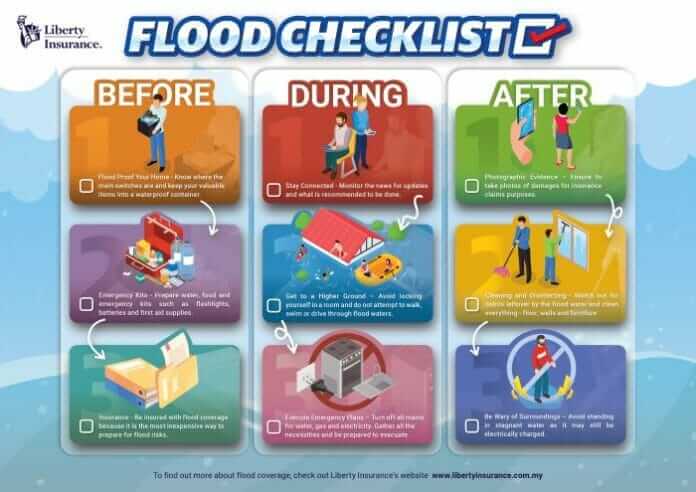
As the annual year-end monsoon season approaches yet again, all Malaysians have been warned to stay vigilant and prepare for floods. Last year, the floods in several states forced over 20,000 families out of their homes and into relief centres prepared by the government. The estimated loss was recorded to be at least RM20 billion nationwide.
Judging by how the monsoon season brings about floods on a yearly basis between November to March, and with rainfall at an all-time high, there are certain precautionary steps that can be taken to help minimise losses and even lives. Below are a few things that can be done before, during and after a flood.
Before a Flood
-
Flood Proof Your Home
Familiarise yourself with where the main switches are and how to turn it off fast in times of a flood. Portable electricity sockets and movable power points should also be relocated above floor level or covered properly to prevent water from entering. Also, do identify items that can be raised onto higher ground to prevent it from being damaged. Valuable items such as
important documents and jewellery should be placed into a waterproof container or waterproof zip lock bags. -
Emergency Kits to be Prepped and Ready to Go
Have a checklist of what is needed, especially the necessities such as food and lots of drinking water. It is also crucial to stock up on emergency kits such as flashlights, batteries, cash, and first aid supplies along with a good and long-lasting power bank to ensure your mobile phones do not run out of battery to reach out for help. Familiarise yourself with the emergency exits and routes for your home and know how to get to higher ground safely. -
Are you insured?
Being insured with flood coverage is definitely a smart choice because it is the most inexpensive way to prepare for flood risks. An insurance can potentially be life-saving as it can cover expenses needed to repair damages to vehicles or homes. If you already have home and vehicle insurance, double-check to ensure flood coverage is part of the policy. Do not take it for granted that flood is covered automatically. Liberty Insurance’s Home Insurance does come with Flood cover. -
During a Flood
Stay Connected. This is one of the most important things to do during a flood – try to ensure your connection to the world is not cut off and you are able to seek help if needed. Do monitor the news or social media feeds for updates or announcements on the rescue operations and what is recommended to be done. Try to be resourceful and exchange information with neighbours to find the best way to get to safer ground. -
Stay Grounded Unless Told Otherwise
The safest thing to do in times of a flood is to get to higher ground immediately but avoid locking yourself in a room as waters might enter and flood the room. Getting onto the roof or an open balcony are better options. Do not attempt to wade or swim through flood waters because it can be hazardous as there is no knowing what is in it or how deep it is. Also, try not to drive out of the flooded area as the vehicle might get stuck or be swept away. -
Execute your Emergency Plans
The moment water starts seeping in, be prepared to execute your emergency plans. Place all electricals onto higher ground and immediately turn off all the mains for water, gas and electricity. Gather all the necessities like food and drinking water before making your way to higher ground. Be ready and prepare to evacuate if necessary and follow all instructions given by rescue personnel.
After a Flood
-
Photographic Evidence
The first thing to do upon reaching home would be to take a photograph of everything that is damaged for insurance claims purposes. Ensure to take photos of damages to both vehicles and the home to clearly show the damages caused by the floods. -
Cleaning and Disinfecting
Major cleaning work would be needed, especially when most items in the house would have been inundated with flood waters. If possible, be sure to put on a pair of gloves, a mask, and rubber boots when cleaning. Watch out for debris left over by the flood waters, especially sharp objects. Clean everything from the floor, walls, furniture, and other appliances. -
Be Wary of Surroundings
Avoid standing in stagnant water as it may still be electrically charged. Flood victims should only return home when authorities give the green light. Just because the water has receded or the rain has stopped, that does not mean that conditions are safe.
To ensure proper flood coverage for your home and your contents, there are insurance options out there that one can take, for instance, Liberty Insurance’s Home Insurance policy offers both the Householder for building and the Houseowner contents Insurance policies that are holistic and comprehensive. These policies cover both the interior and exterior of the house that includes furniture, electrical appliances, personal effects, valuables, and even clothing.







